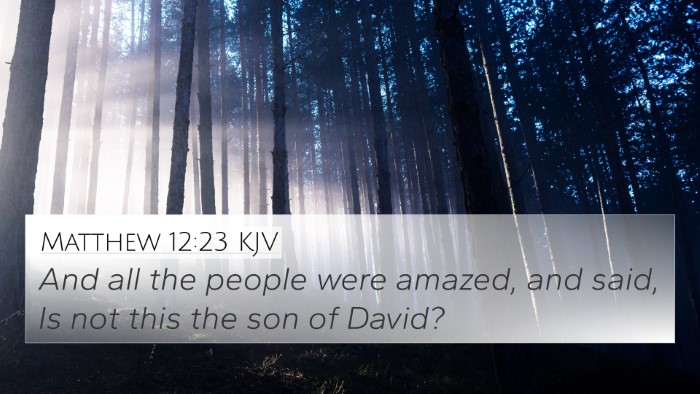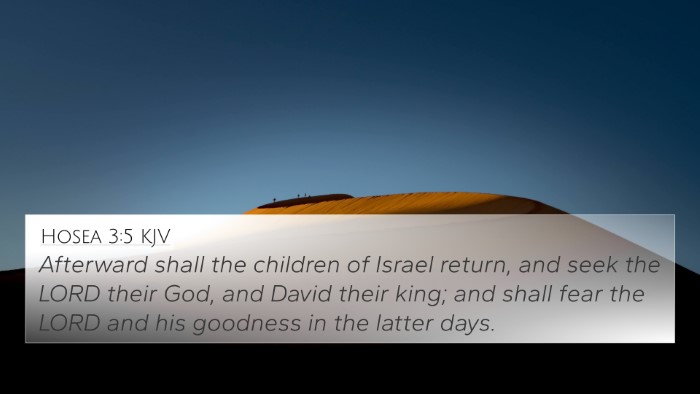Meaning and Interpretation of Luke 5:26
Luke 5:26 states:
"And they were all amazed, and they glorified God, and were filled with fear, saying, We have seen strangel things to day."
This verse is a pivotal moment in the narrative of Jesus' ministry, illustrating the awe and reverence that His miraculous actions inspired in those who witnessed them. Below is a comprehensive summary of the meanings derived from various public domain commentaries.
Understanding the Context
In the preceding passages, Jesus heals a paralyzed man, showcasing His authority to forgive sins. The miraculous healing emphasizes two main points:
- Divine Authority: Jesus’ ability to perform such miracles is an affirmation of His divinity and His role as the Messiah.
- Human Response: The amazement and glorification of God by the witnesses highlight the appropriate response to witnessing divine acts.
Theological Insights
This verse prompts several theological reflections:
- Faith and Fear: The intense reaction of the onlookers intertwines awe and fear; it suggests a deep recognition of God's power.
- Miraculous Works: Miracles in the New Testament serve not only to relieve suffering but also to point to a greater reality - the revelation of God through Christ.
Commentary Highlights
Here is a synthesis of insights from renowned commentators:
Matthew Henry
Matthew Henry notes that the amazement of the people was a natural reaction to witnessing a miracle. He emphasizes the importance of glorifying God in response to His works. Henry recommends that such moments should drive believers to a deeper faith and a longing to see more of God's revealing power.
Albert Barnes
Albert Barnes focuses on the phrase "we have seen strange things." He explains that the term “strange” reflects the unprecedented nature of the miracles performed by Jesus. Barnes suggests that this astonishment serves to draw attention to the divine mission of Christ, emphasizing His role in revealing the character of God to humankind.
Adam Clarke
Adam Clarke interprets this event as confirmation of Jesus’ messianic identity. He indicates that the witnesses' reactions reveal their realization of the extraordinary powers attributed to Jesus. Clarke also discusses how such public displays of divine power were meant to awaken faith and repentance in the observers.
Cross-References to Luke 5:26
Luke 5:26 ties closely to several key Bible verses that enhance its understanding:
- Mark 2:12: The parallel account of the healing of the man with palsy, focusing on the amazement of the crowd.
- Matthew 9:8: Similar response to Jesus’ healing, correlating the miracle with God's authority.
- Luke 7:16: Similar expressions of amazement after another miracle performed by Jesus.
- Acts 2:43: The fear and awe that followed the apostles’ miracles, echoing the response seen in Luke 5:26.
- John 20:30-31: A summary of Jesus’ works as a means to foster belief in Him, resonating with the themes of wonder.
- Matthew 14:33: The disciples’ reaction to Jesus calming the storm demonstrates similar awe.
- Luke 8:25: Another instance showcasing the disciples' fear and amazement at Jesus' power.
Connections Between Bible Verses
The inter-Biblical dialogue created by these verses illustrates a significant theme of God's intervention in human affairs. Linking these scriptures allows for:
- Comparative Bible Verse Analysis: Understanding how accounts of miracles serve similar purposes across the Gospels.
- Thematic Bible Verse Connections: Noting how the responsiveness of people to Jesus' miracles reflects larger truths about faith and revelation.
Conclusion
Luke 5:26 serves as a powerful reminder of the impact of Christ's miracles and the proper human response to divine revelations. Through cross-referencing with related scriptures, we can see a broader picture of God's engagement with humanity through Christ, establishing connections that reveal divine authority and inspire faith.
For those studying the Scriptures, utilizing a Bible concordance and cross-reference guide can aid in exploring the links between these powerful verses and themes, enhancing our understanding of the Bible's rich tapestry.














